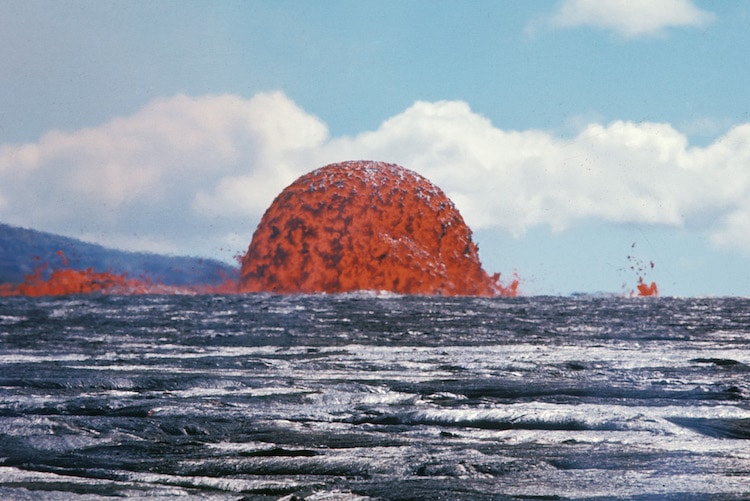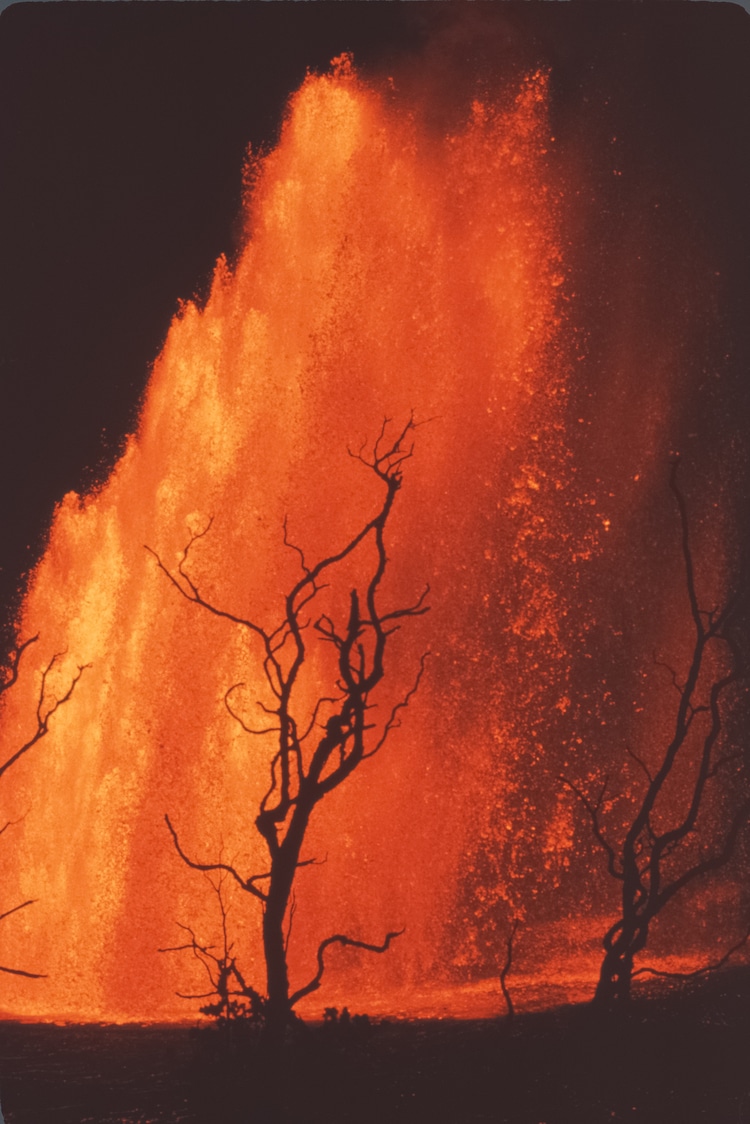A 65-foot-tall lava dome in Hawaii was the result of an eruption that lasted from 1969 to 1974 and the U.S. Geological Survey has shared a photograph depicting the rarity of the phenomena.
The Mauna Ulu eruption of Kilauea Volcano produced nearly 460 million cubic yards of lava that spanned five years and was viewable to the public.
The image of the rare event was shared by the USGS on Twitter and was captured in 1969 by J.B. Judd, a photographer who managed to capture a glimpse of the dome fountain that reached 245 feet in height. The entire eruption lasted amazingly for three days.
Although the dome appears to be in water it’s actually resting on land. Symmetrical dome fountains are incredibly rare. The dome formed between October 10 and October 13 during the span of a five-day eruption on Hawaii’s hyper-active island.
According to a post on My Modern Met, lava shoots higher than American Falls at Niagara. Lava falls can reach up to 330 feet and obtain a width of 1000 feet.
Lava Dome in Hawaii

The tallest part of the eruption (1770 feet) was on September 6, 1969.

If you thought that was cool make sure you check out this incredibly rare rain bomb falling from the sky! Don’t forget to give this a share on Facebook before you go.
More info: U.S. Geological Survey
- Share On Facebook
- Like
- Digg
- Del
- VKontakte
- Flattr
- Buffer
- Love This
- Odnoklassniki
- Meneame
- Blogger
- Amazon
- Yahoo Mail
- Gmail
- AOL
- Newsvine
- HackerNews
- Evernote
- MySpace
- Mail.ru
- Viadeo
- Line
- Comments
- Yummly
- SMS
- Viber
- Telegram
- Subscribe
- Skype
- Facebook Messenger
- Kakao
- LiveJournal
- Yammer
- Edgar
- Fintel
- Mix
- Instapaper
- Copy Link
